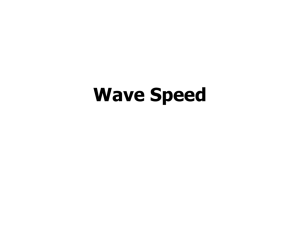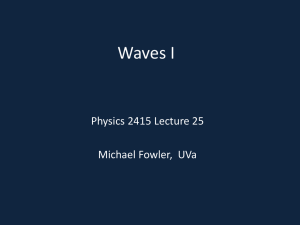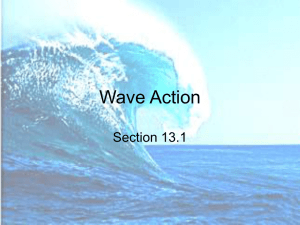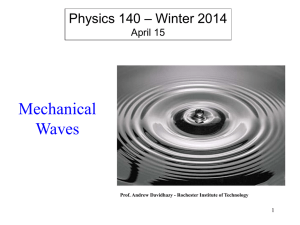Determining Wave Speed
advertisement
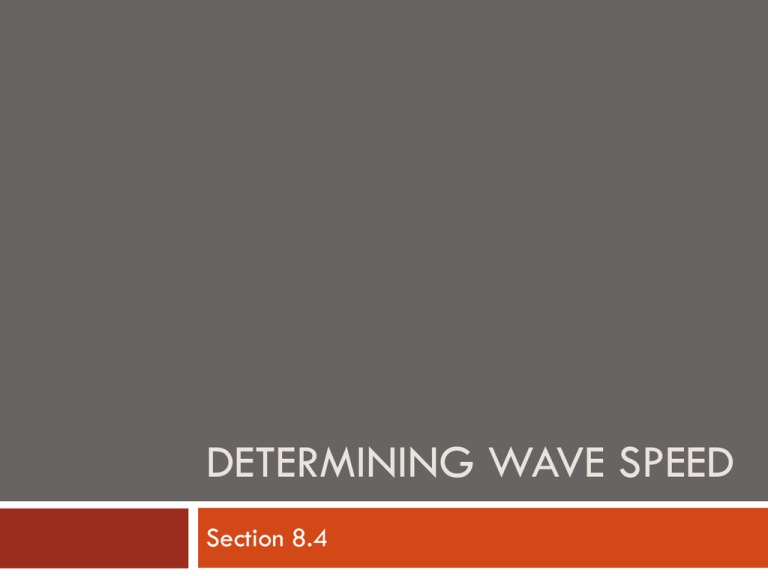
DETERMINING WAVE SPEED Section 8.4 Key Terms Universal Wave Equation Linear Density Universal Wave Equation To determine the how fast a wave is moving, you must know: Its period (eg – time between successive crests passing a reference point) Its wavelength (distance between crests) You can then calculate wave speed using the 𝑑 equation for average speed: 𝑣 = 𝑡 Or, for wave speed Universal Wave Equation cont’d Since frequency is the reciprocal of period, we can further develop the equation: Sample Problem 1 A harp string supports a wave with a wavelength of 2.3 m and a frequency of 220.0 Hz. Calculate its wave speed. Given: = 2.3 m; f = 220.0 Hz Required: v = ? Analysis: v = f Solution: v = f = (220.0 Hz)(2.3 m) v = 506 m/s Statement: The wave speed on the string is 506 m/s Sample Problem 2 A trumpet produces a sound wave that is observed travelling at 350 m/s with a frequency of 1046.50 Hz. Calculate the wavelength of the sound wave. Given: v = 350 m/s; f = 1046.50 Hz Required: = ? Analysis: = v/f Solution: = (350 m/s) / (1046.50 Hz) = 0.33 m Statement: The wave speed on the string is 0.33 m Practice Questions 1-3 1. 2. 3. 530 m/s 140 m 2.0 x 102 Hz Factors That Affect Wave Speed Energy transfers much more efficiently using waves is more efficient if the particle vibrations do not absorb much energy. An inflated soccer ball will bounce much more effectively than a deflated one. Linear Density The speed of a wave along a string is governed by the properties of the string. Think guitar/violin strings. A string’s linear density, µ (mass per unit distance), determines how much force it will take to make the string vibrate. m = mass of string in kg, L = length in metres String Tension String tension will also affect wave speed Loose FT strings vs. taut strings = tension in the string, in newtons µ = linear density, in kg/m Sample Problem 1 A wave machine has a string of mass 350g and a length of 2.3m. What must the tension of the string be to send a wave along the string at a speed of 50.0 m/s? Practice questions 1-3 Summary The universal wave equation relates the speed of a wave to its frequency and wavelength. The universal wave equation applies to all waves. More rigid intermolecular forces allow for a faster transfer of energy, and therefore a higher wave speed in a medium. Waves travel faster in hotter gases than in cooler gases because of the increased molecular motion caused by the higher temperature in a hotter gas. The speed of a wave on a string depends on the linear density of the string and the string’s tension: Homework Page 391 Questions 1-7

